Tips & Tricks
Repotting Houseplants
 Unlike outdoor plants, which get lots of attention throughout the growing season—pruning, deadheading, fertilizing, mulching, and watering—houseplants often just sit on their shelf, enjoying their regular or semi-regular drink of water. But there are a few things you can do to show your houseplants a little TLC, including repotting them from time to time. This easy task gives you the opportunity to refresh and replenish the soil, eliminate salt and mineral residue from watering, perhaps give your plant a bigger pot to grow in, and do a little maintenance if the foliage has gotten unruly. Repotting should also stimulate new growth and allow your plant to flourish in its new home. There may even be an opportunity to divide a houseplant, so you may need more than one pot.
Unlike outdoor plants, which get lots of attention throughout the growing season—pruning, deadheading, fertilizing, mulching, and watering—houseplants often just sit on their shelf, enjoying their regular or semi-regular drink of water. But there are a few things you can do to show your houseplants a little TLC, including repotting them from time to time. This easy task gives you the opportunity to refresh and replenish the soil, eliminate salt and mineral residue from watering, perhaps give your plant a bigger pot to grow in, and do a little maintenance if the foliage has gotten unruly. Repotting should also stimulate new growth and allow your plant to flourish in its new home. There may even be an opportunity to divide a houseplant, so you may need more than one pot.
Spring is the best time to repot houseplants. The day before you plan on repotting, give your plant a nice long drink. The day of, protect your working area with newspaper or a tablecloth. Have your clean pot(s) at the ready. If your plant needs more room, you want to make sure the pot is no more than two inches bigger in diameter than the previous pot to avoid root rot.
If your pot doesn’t have a drainage hole, though this is highly recommended, add a layer (about half an inch) of activated charcoal to the bottom of your pot. Then add a few inches of potting soil. Make sure your soil is formulated for the plant you are repotting, such as cactus soil or African violet soil.
Carefully remove the plant from its pot and trim away any dead leaves. Tease some of the old soil away from the roots. Gently place the plant in the centre of its new pot, so that the plant’s base, when covered, is about a half inch from the rim. Add houseplant soil around the root ball to fill in any gaps, ensuring roots are covered. Use your finger to gently tamp down the soil, eliminating any air pockets. Give the plant a light watering. Your plant may go through a period where it looks a little under the weather, but this could just be the shock of transplanting. Having a regular houseplant maintenance schedule will keep your plants happy and healthy.
How do you mulch around a tree?
How many trees do you see day to day that have mulch piled up around them? These are called mulch volcanos. They are pretty prevalent, but they’re actually not beneficial to the tree at all. Piling mulch around the base of the tree trunk can cause the bark to begin to rot and invite disease. The proper way to mulch around a tree is to keep the mulch more at ground level, no more than two to four inches, and keep the mulch at least five inches from the tree trunk.
How much mulch should you place in a perennial garden?
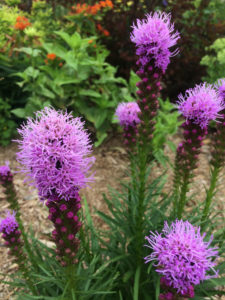 Mulch is a great way to keep the weeds down in a perennial bed, conserve moisture and really tidy up the area for a uniform look. There are different types of mulches, such as shredded cedar or pine bark. About two to three inches applied mid to late spring is ample. Keep the mulch away from the stems of plants to prevent them from rotting.
Mulch is a great way to keep the weeds down in a perennial bed, conserve moisture and really tidy up the area for a uniform look. There are different types of mulches, such as shredded cedar or pine bark. About two to three inches applied mid to late spring is ample. Keep the mulch away from the stems of plants to prevent them from rotting.
The benefits of mulch
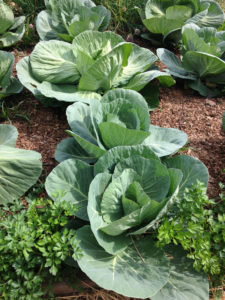 Not only does a mulched garden look great as it forms a uniform layer around the plants, it is a great way to prevent weeds, cool the soil in a heatwave and conserve moisture. Mulch is especially beneficial to hot, sunny gardens, whether they are edible or ornamental. And, depending on what type of mulch you use, it will break down over time and nourish the soil, which is win-win!
Not only does a mulched garden look great as it forms a uniform layer around the plants, it is a great way to prevent weeds, cool the soil in a heatwave and conserve moisture. Mulch is especially beneficial to hot, sunny gardens, whether they are edible or ornamental. And, depending on what type of mulch you use, it will break down over time and nourish the soil, which is win-win!
How to create a soil mix for a raised bed
If you are looking to fill a raised bed—or two or three—with soil, there are a few options. Mel Bartholomew, who created the square foot gardening method, recommends one third perlite or vermiculite, one third peat, and one third compost (with about six different types of compost in the mix). Another option is to arrange for a soil delivery, fill the raised beds and top-dress them with about two to three inches of compost (mushroom, shrimp, organic vegetable compost, etc.).
How to use a soil calculator
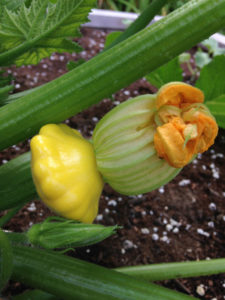 If you have multiple areas in the garden to fill with mulch or stone, special calculators can take the guesswork out of how much you need.
If you have multiple areas in the garden to fill with mulch or stone, special calculators can take the guesswork out of how much you need.
AllTreat Farms’ stone and mulch calculator provides recommendations for the depth of mulch or stones that are typically used in an area. From there you can choose which measuring system you’d prefer, and then enter the depth and area of your garden. The calculator will indicate the volume of the space (pathway or garden), and how many bags are needed to fill it.
Make a new garden or pathway with cardboard and mulch
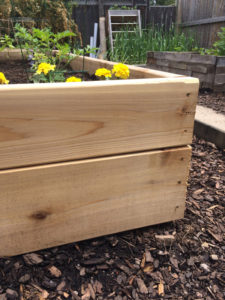 Anyone who has ever tried to dig up fresh turf knows how time-consuming it is—and most municipalities won’t take sod in their yard bags. To create a fresh garden or pathway overtop of grass, simply place a layer of corrugated cardboard overtop of the area, give it a little spray with the hose to moisten and cover with a few inches of compost. You may want to grab some bricks or rocks to hold the corners down. Over the season, the cardboard will break down and simply become part of the garden.
Anyone who has ever tried to dig up fresh turf knows how time-consuming it is—and most municipalities won’t take sod in their yard bags. To create a fresh garden or pathway overtop of grass, simply place a layer of corrugated cardboard overtop of the area, give it a little spray with the hose to moisten and cover with a few inches of compost. You may want to grab some bricks or rocks to hold the corners down. Over the season, the cardboard will break down and simply become part of the garden.
Why should you freshen up your raised beds with compost each spring?
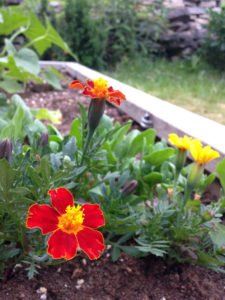 There are a few reasons to amend your soil in the springtime. The main reason is that the plants that you pulled out after the previous growing season will have depleted the soil of nutrients. Furthermore, the roots will have taken some soil with them to the yard bags, as well. Adding a few inches of compost in the spring or fall adds nutrients back into your garden (it’s a good idea to keep some on reserve to sprinkle in the garden throughout the season, as well). Secondly, after a few heavy rains, the soil flattens down, so you want to keep your raised beds nice and full.
There are a few reasons to amend your soil in the springtime. The main reason is that the plants that you pulled out after the previous growing season will have depleted the soil of nutrients. Furthermore, the roots will have taken some soil with them to the yard bags, as well. Adding a few inches of compost in the spring or fall adds nutrients back into your garden (it’s a good idea to keep some on reserve to sprinkle in the garden throughout the season, as well). Secondly, after a few heavy rains, the soil flattens down, so you want to keep your raised beds nice and full.
What kind of soil should I use in container gardens?
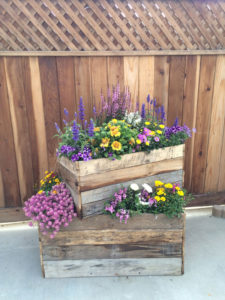 Not all soils are created equal. Top soil, for example, is much too heavy to put in a container. You want to purchase something that will provide good aeration and that will allow the pot to drain well. Look for bags that feature a container-ready mix. The label will say something like All-Purpose Potting Soil or Organic Potting Soil. These should be well-formulated for planting both food and flowers. Also, only fill to about one to two inches from the top, so that when you water, soil and water doesn’t spill over the side.
Not all soils are created equal. Top soil, for example, is much too heavy to put in a container. You want to purchase something that will provide good aeration and that will allow the pot to drain well. Look for bags that feature a container-ready mix. The label will say something like All-Purpose Potting Soil or Organic Potting Soil. These should be well-formulated for planting both food and flowers. Also, only fill to about one to two inches from the top, so that when you water, soil and water doesn’t spill over the side.
To till or not to till your garden?
 There is much debate online about whether to till your garden soil each year, but more and more scientific evidence is pointing to leaving it alone and simply amending the soil at the start of spring. The reason is there is a whole flurry of micro-activity happening beneath the soil that is disturbed once you start digging and hoeing. Instead of digging around and upsetting the soil structure, top-dress your garden with a couple of inches of compost in the spring and again in the fall. Over time, if soil is hard-packed or clay underneath, it will gradually become more loose and friable.
There is much debate online about whether to till your garden soil each year, but more and more scientific evidence is pointing to leaving it alone and simply amending the soil at the start of spring. The reason is there is a whole flurry of micro-activity happening beneath the soil that is disturbed once you start digging and hoeing. Instead of digging around and upsetting the soil structure, top-dress your garden with a couple of inches of compost in the spring and again in the fall. Over time, if soil is hard-packed or clay underneath, it will gradually become more loose and friable.
How do you add manure to a vegetable garden?
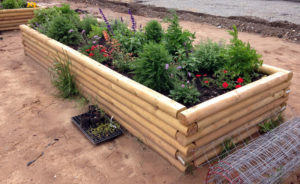 Manure is a great soil amendment choice. Composted manure will contain carbon, nitrogen and phosphorus, all essential nutrients for plant growth. When you add manure to a garden, especially an edible one, you want to make sure it’s in a well-rotted state. Whatever you purchase in a bag will have had ample time to decompose so that it’s safe to use on crops. Top-dress your raised bed or garden with a couple of inches of compost in the fall (so you don’t have to worry about it come spring), or in the springtime before planting.
Manure is a great soil amendment choice. Composted manure will contain carbon, nitrogen and phosphorus, all essential nutrients for plant growth. When you add manure to a garden, especially an edible one, you want to make sure it’s in a well-rotted state. Whatever you purchase in a bag will have had ample time to decompose so that it’s safe to use on crops. Top-dress your raised bed or garden with a couple of inches of compost in the fall (so you don’t have to worry about it come spring), or in the springtime before planting.
Growing veggies and herbs in pots
If you have dreams of harvesting your own fresh vegetables, but you don’t have the space for a big garden—or a yard—consider growing your edibles in containers. Many seed companies and growers are selling patio varieties of veggie favourites that will do well in pots and provide an ample yield. Look for the words “patio” or “dwarf” when selecting plants, like tomatoes, cucumbers, beans, peas and peppers. Here are some tips for growing edibles in pots:
 Choosing a container
Choosing a container
When selecting a pot, you want to make sure the depth is at least eight inches. There are different materials you can choose from, as well, from heavy-duty plastic to terracotta or ceramic. Fabric pots have become popular because they are lightweight (which is great if you have concerns about weight on a balcony, for example) and store easily for the winter (shake out the soil and fold them up). Fabric containers also encourage a process called root pruning. Because they are permeable, the air flows through the whole pot, strengthening the root ball. Fabric planters are available in various widths and depths. Generally the label will indicate which plants will grow best in which size.
Planting
Choose an organic potting soil formulated for edibles, like All Treat Naturals Organic Potting Soil. Fill your container, leaving about an inch or two free at the top so the water doesn’t spill over the sides. Read the plant tag to see how far apart  plants need to be so you can decide how many will fit. You can bend the rules a little bit if you’re pairing companion plants. For example, you might not have room for three tomato plants, but a good-sized pot will fit a tomato plant, basil and perhaps an annual flower.
plants need to be so you can decide how many will fit. You can bend the rules a little bit if you’re pairing companion plants. For example, you might not have room for three tomato plants, but a good-sized pot will fit a tomato plant, basil and perhaps an annual flower.
If you don’t have a lot of extra space for herbs, consider tucking them into ornamental combinations. Parsley, lemon thyme, mint and basil all have various textures and colours that pair well as foliage with annual flowers.
Caring for plants
Even patio varieties can grow tall enough to require a stake or trellis to hold them up, so be sure to add something they can climb at the time of planting. Container soil dries out more quickly than the garden, so you may need to water once or even twice a day, depending on the temperature.
